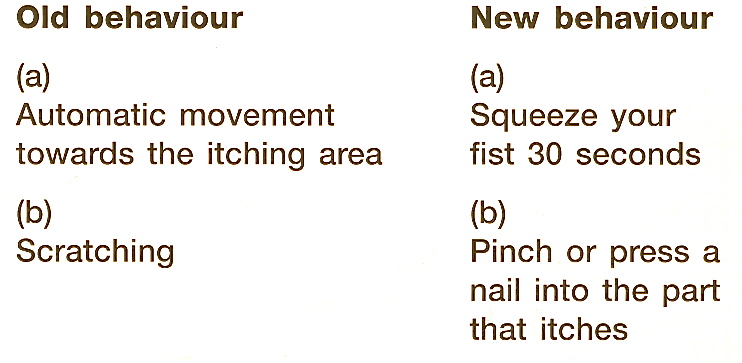Habit reversal (HR) is a type of behavioral treatment that is used to reduce repetitive behaviors which may be bothersome and serve no adaptive function, such as tics, hair-pulling, and nervous habits. HR was first developed in the 1970s, and has since been used in the treatment of several repetitive behavior disorders, particularly tic disorders.
How does Habit Reversal work?
HR is based on the premise that people are often not aware each time a tic or other repetitive behavior occurs, and that repetitive behaviors often follow an urge or feeling of discomfort which is only relieved by engaging in the behavior itself. HR works to increase awareness of one's behaviors and to provide relief with strategies that replace the unwanted behavior with a less bothersome behavior.
After the initial evaluation and before the start of treatment, the plan and rationale are presented to the child and family. The history and occurrence of the behavior are identified and described, including the estimated frequency of each occurrence of the behavior and its precipitating factors such as bedtime, homework, social situations, etc. Clear instructions are given about self-monitoring, which involves keeping a log or record of each time the behavior occurs. The log should include not only frequency of the behavior, but also places and times of day when it occurs, so that the child can recognize those situations in which the behavior is more likely to happen. To benefit most from the program, it is helpful to enlist a partner, such as a parent, to help with maintaining awareness of the behavior and to ease record-keeping. If the behavior is frequent, it may be helpful to begin monitoring a specified amount of time each day, such as 30 minutes. As the process becomes more comfortable, the child may then log each occurrence of the behavior throughout the day. It is also useful to discuss challenges to self-monitoring and to problem-solve around those difficulties before they occur.
The next step in Habit Reversal is developing a competing response. A competing response is another behavior that the child may do in place of the repetitive behavior. A competing response often uses the same muscles used in the initial behavior, so that the child is unable to do the behavior while performing the competing response. For example, a child who has a shoulder shrug tic might use the competing response of lengthening the neck and pushing the shoulders downward. The competing response should be held for at least one minute, be inconspicuous, and strengthen the muscles opposite to the repetitive behavior.
It may be helpful for the child to practice his competing response in front of a mirror to show that it is not noticeable to others and to help him become more comfortable with this new behavior. The child should be encouraged to use the competing response whenever he notices himself doing the repetitive behavior or even feels the urge to do so. Parents should praise their child's correct use of the competing response and remind the child to use it when he is engaged in the repetitive behavior. Praise should also be used whenever the behavior is reduced in frequency.
What other strategies may be used to decrease repetitive behaviors?
Because many repetitive behaviors are often increased during times of stress or tension, it may be helpful to implement strategies that lead to an overall decrease in tension. For example, children may be taught to breathe in slowly through the nose and to exhale through the mouth. They can also learn to recognize the way their diaphragm expands with each inhale and contracts with each exhale. This tends to have a calming effect, and it is another strategy that may be used inconspicuously in any situation.
What about research?
HR has been found to be effective, with results lasting over time, in treatment of chronic tics, other repetitive behaviors, and Tourette's Disorder. Despite numerous studies, only a few controlled studies have been conducted. In these studies, HR was found to be effective when compared to wait list strategies, and when compared to supportive psychotherapy. When compared to exposure and response prevention treatment, no differences were found, and both treatments were found to be effective. Overall, a large body of evidence supports the effectiveness of Habit Reversal. However, additional research is needed using controlled studies with larger sample sizes and comparing behavioral interventions with medication.
Who should consider trying habit reversal?
Habit Reversal should be considered as an addition or alternative to medication therapy. It is now recommended as the first approach to treatment of children and adolescents with mild to moderate tics. This may be particularly helpful for those who refuse or discontinue medication due to side effects or other problems. As with other approaches, please discuss habit reversal with your treating physician before beginning any new type of treatment.



Dr.D.M.Mahajan specializes in Hair transplantation services in Delhi/Ncr. For more information regarding medical UAE Facilities and hair transplant costs in gurgaon visit http://www.skindelhi.com/hair_transplant.html.
ReplyDelete